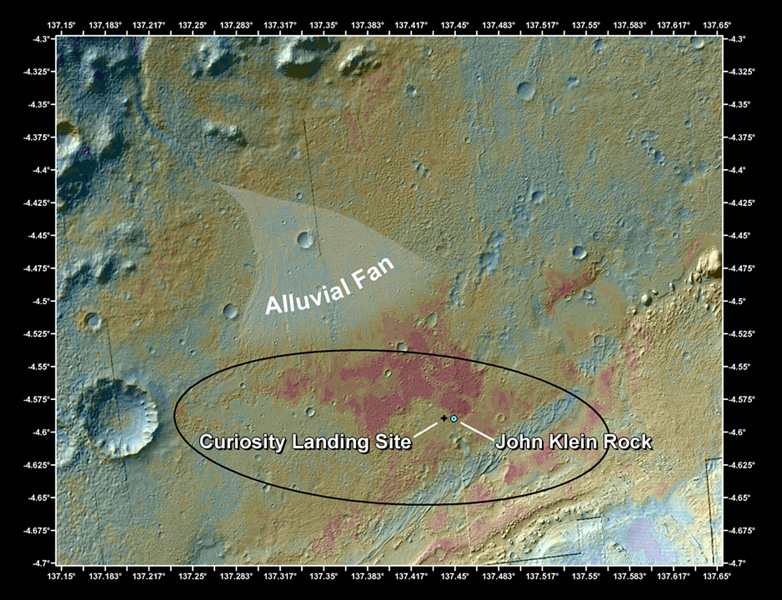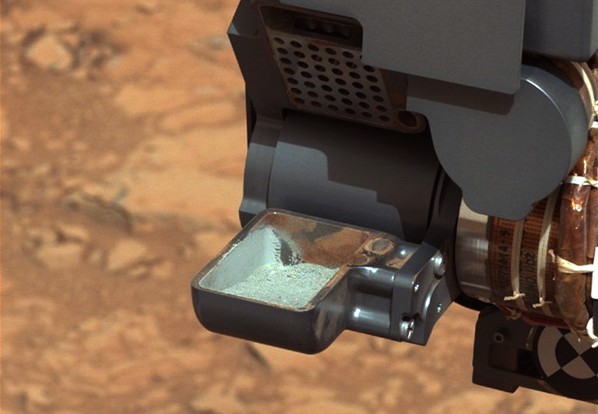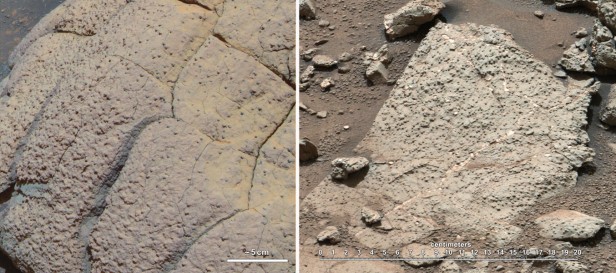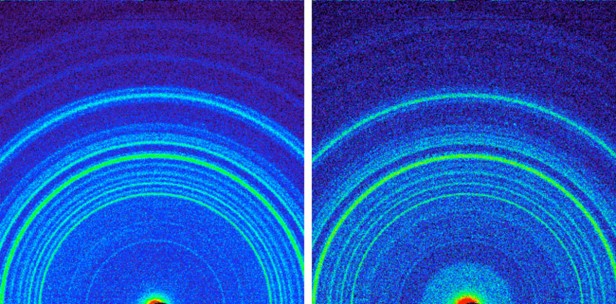Rock sample analysis indicates ancient Mars could have supported life

Finally, NASA revealed results obtained from analysis of rock sample collected by Curiosity last month and reported ancient Mars could have had environment suitable for microbial life. Gray colored sample drilled out of a sedimentary rock contained some of the key chemical ingredients for life viz. sulfur, nitrogen, hydrogen, oxygen, phosphorus and carbon; analysis by rover’s Sample Analysis at Mars (SAM) and Chemistry and Mineralogy (CheMin) instruments found. These findings do not validate past existence of life on Mars, for it only indicates ancient Mars could have supported living microbes. Michael Meyer, lead scientist for NASA’s Mars Exploration Program at the agency’s headquarters in Washington said,
“A fundamental question for this mission is whether Mars could have supported a habitable environment. From what we know now, the answer is yes.”.
 First sample of powdered rock extracted by the rover’s drill last month. The image was taken after the sample was transferred from the drill to the rover’s scoop. Credits: NASA/JPL-Caltech/MSSS
First sample of powdered rock extracted by the rover’s drill last month. The image was taken after the sample was transferred from the drill to the rover’s scoop. Credits: NASA/JPL-Caltech/MSSS
Drilling spot, a patch of bedrock a few hundred yards away from where the rover earlier found an ancient streambed in September 2012, lies in a network of ancient stream channels descending from the rim of Gale Crater. Dubbed Yellowknife Bay area, data indicates it was the end of an ancient river system or an intermittently wet lake bed that could have provided chemical energy and other favorable conditions for microbes. The rock is made up of a fine-grained mudstone containing clay minerals, sulfate minerals and other chemicals. This ancient wet environment, unlike some others on Mars, was not harshly oxidizing, acidic or extremely salty.
Principal investigator for the CheMin instrument David Blake told that sample contained at least 20 percent clay minerals. These clay minerals are a product of the reaction of relatively fresh water with igneous minerals, such as olivine, also present in the sediment. The reaction could have taken place within the sedimentary deposit, during transport of the sediment, or in the source region of the sediment. The presence of calcium sulfate along with the clay suggests the soil is neutral or mildly alkaline.
 This set of images compares rocks seen by NASA’s Opportunity rover and Curiosity rover at two different parts of Mars. On the left is ” Wopmay” rock, in Endurance Crater, Meridiani Planum, as studied by the Opportunity rover. On the right are the rocks of the “Sheepbed” unit in Yellowknife Bay, in Gale Crater, as seen by Curiosity. Image credit: NASA/JPL-Caltech/Cornell/MSSS
This set of images compares rocks seen by NASA’s Opportunity rover and Curiosity rover at two different parts of Mars. On the left is ” Wopmay” rock, in Endurance Crater, Meridiani Planum, as studied by the Opportunity rover. On the right are the rocks of the “Sheepbed” unit in Yellowknife Bay, in Gale Crater, as seen by Curiosity. Image credit: NASA/JPL-Caltech/Cornell/MSSS
Scientists were surprised to find a mixture of oxidized, less-oxidized, and even non-oxidized chemicals, providing an energy gradient of the sort many microbes on Earth exploit to live. This partial oxidation was first hinted at when the drill cuttings were revealed to be gray rather than red. Paul Mahaffy, principal investigator of the SAM suite of instruments at NASA’s Goddard Space Flight Center in Greenbelt, Md. said,
“The range of chemical ingredients we have identified in the sample is impressive, and it suggests pairings such as sulfates and sulfides that indicate a possible chemical energy source for micro-organisms.”
 This side-by-side comparison shows the X-ray diffraction patterns of two different samples collected from the Martian surface by NASA’s Curiosity rover. These images, made from data obtained by Curiosity’s Chemistry and Mineralogy instrument (CheMin), show the patterns obtained from a drift of windblown dust and sand called “Rocknest” and from a powdered rock sample drilled from the “John Klein” bedrock.
This side-by-side comparison shows the X-ray diffraction patterns of two different samples collected from the Martian surface by NASA’s Curiosity rover. These images, made from data obtained by Curiosity’s Chemistry and Mineralogy instrument (CheMin), show the patterns obtained from a drift of windblown dust and sand called “Rocknest” and from a powdered rock sample drilled from the “John Klein” bedrock.Image credit: NASA/JPL-Caltech/Ames
Talking about new findings by Curiosity, John Grotzinger, Mars Science Laboratory project scientist at the California Institute of Technology in Pasadena, Calif. said,
“We have characterized a very ancient, but strangely new ‘gray Mars’ where conditions once were favorable for life. Curiosity is on a mission of discovery and exploration, and as a team we feel there are many more exciting discoveries ahead of us in the months and years to come.”
Curiosity team is planning to confirm these results by using an additional drilled sample for several of the trace gases analyzed by the SAM instrument. Scientists plan to work with Curiosity in the “Yellowknife Bay” area for many more weeks before beginning a long drive to Gale Crater’s central mound, Mount Sharp. Investigating the stack of layers exposed on Mount Sharp, where clay minerals and sulfate minerals have been identified from orbit, may add information about the duration and diversity of habitable conditions.
NASA TV briefing held on March 12 about analysis of the first sample of rock powder ever collected on Mars:

Source: JPL/NASA
Featured image: Location of John Klein Drill Site
This false-color map shows the area within Gale Crater on Mars, where NASA’s Curiosity rover landed on Aug. 5, 2012 PDT (Aug. 6, 2012 EDT) and the location where Curiosity collected its first drilled sample at the “John Klein” rock. The image merges topographic data with thermal inertia data that record the ability of the surface to hold onto heat. Red indicates a surface material that retains its heat longer into the evening than other areas, suggesting differences relative to its surroundings.

these nasa dudes are not to sharp aren’t they? dudes like sitchin, ramtha, rachele, and some more others are keep telling that in the last 30 years.